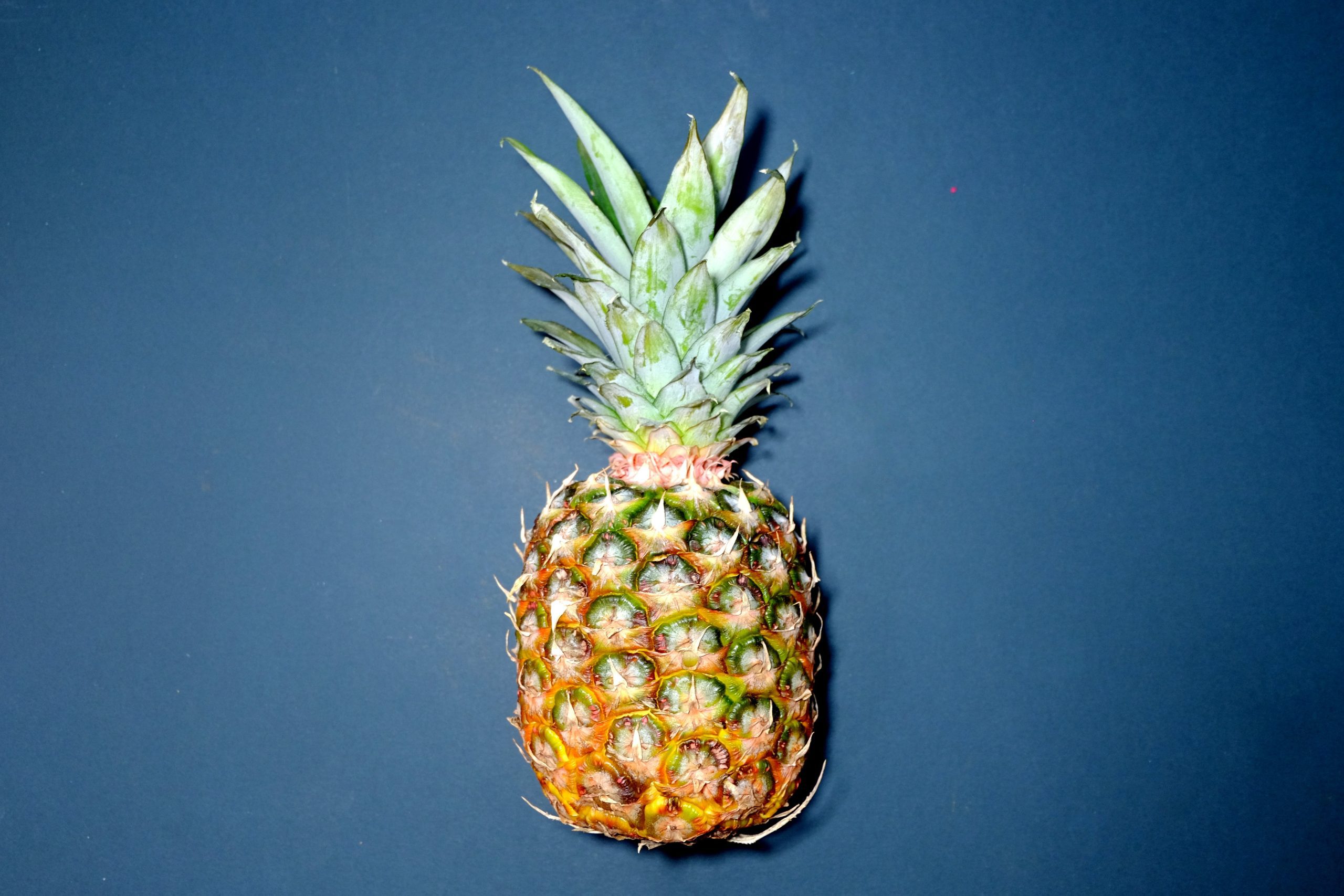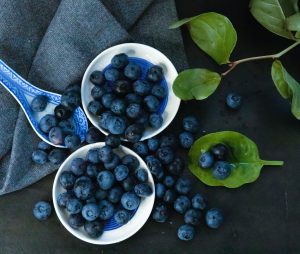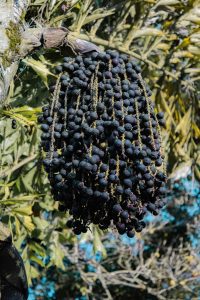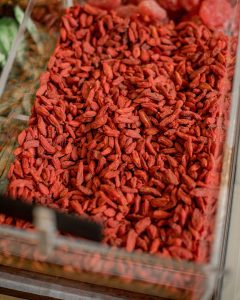
What Is a Pineapple?
A pineapple is a tropical fruit known for its distinctive appearance, sweet taste, and vibrant aroma. Scientifically classified as Ananas comosus, pineapples belong to the Bromeliaceae family. Native to South America, particularly in regions like Paraguay and southern Brazil, pineapples are now cultivated in tropical and subtropical areas worldwide. The fruit features a spiky, rough exterior with a crown of spiny leaves and a cylindrical, segmented structure.
Pineapples are prized for their juicy, yellow flesh, which is rich in vitamins, minerals, and enzymes. The fruit contains bromelain, an enzyme with potential health benefits. Enjoyed fresh, juiced, or incorporated into dishes like fruit salads, desserts, and savory meals, pineapples offer a delightful tropical flavor. Additionally, they are used in the production of beverages, including pineapple juice and piña coladas. The versatility and refreshing taste make pineapples a popular choice in various culinary and nutritional applications.
Why Do We Eat Pineapples?
People eat pineapples for various reasons, including their delicious taste, nutritional benefits, and versatility in culinary applications. Here are some reasons why pineapples are commonly consumed:
- Sweet Flavor:
- Pineapples are known for their naturally sweet and tangy taste, making them a refreshing and enjoyable fruit to eat fresh or in various dishes.
- Rich in Vitamins and Minerals:
- Pineapples are a good source of vitamin C, manganese, and other vitamins and minerals. Vitamin C is an antioxidant that supports the immune system and skin health.
- Digestive Enzymes:
- Pineapples contain bromelain, a mixture of digestive enzymes, which may aid in digestion and have anti-inflammatory properties.
- Hydration:
- Pineapples have a high water content, contributing to hydration and providing a juicy and thirst-quenching quality.
- Versatility in Culinary Uses:
- Pineapples can be used in a variety of culinary preparations, including fruit salads, smoothies, desserts, salsas, and savory dishes. Grilled pineapple is also a popular option.
- Nutrient-Dense Snack:
- Eating pineapples as a snack provides a satisfying and nutrient-dense option, especially when consumed fresh.
- Beverages:
- Pineapples are used in the production of juices, cocktails, and smoothies, adding a tropical and sweet flavor to beverages.
- Culinary Pairings:
- Pineapples complement both sweet and savory dishes, enhancing the flavor profile of recipes. They are often used in tropical and Asian cuisines.
- Canned and Preserved Forms:
- Pineapples are available in canned and preserved forms, providing convenience and accessibility throughout the year.
Overall, the combination of a delightful taste, nutritional content, and culinary versatility makes pineapples a popular and enjoyable fruit in various forms and dishes.
When Do We Eat Pineapples?
Pineapples can be enjoyed at various times of the day and incorporated into different meals and snacks. Here are common occasions and ways people eat pineapples:
- Fresh Snacking:
- Pineapples are often enjoyed as a refreshing and hydrating snack. Simply peel and cut the fruit into bite-sized pieces for a quick and healthy treat.
- Breakfast:
- Add pineapple chunks to breakfast options like yogurt, cereal, or oatmeal for a burst of tropical flavor. They can also be included in smoothie bowls or fruit salads.
- Salads:
- Pineapple adds a sweet and tangy element to salads. Combine it with greens, nuts, and other fruits for a delicious and vibrant salad.
- Desserts:
- Pineapple is a popular ingredient in desserts such as fruit salads, sorbets, ice creams, and cakes. It can also be grilled and served as a topping for desserts.
- Beverages:
- Pineapple juice is commonly consumed on its own or used in the preparation of tropical drinks, cocktails, and smoothies.
- Salsas and Dips:
- Pineapple salsa is a flavorful accompaniment to grilled meats, fish, or tacos. It can also be incorporated into dips for a sweet and spicy twist.
- Grilled or Barbecued:
- Grilled pineapple slices or chunks are a delicious addition to barbecues and outdoor gatherings. The heat enhances the natural sweetness of the fruit.
- Canned or Preserved Form:
- Pineapples are available in canned or preserved forms, making them convenient for year-round consumption. They can be used in cooking or eaten on their own.
- Tropical and Asian Cuisine:
- Pineapple is a common ingredient in tropical and Asian cuisines, used in dishes like sweet and sour chicken, pineapple fried rice, and curries.
Whether enjoyed fresh, juiced, grilled, or incorporated into various dishes, pineapples offer a versatile and tropical flavor that can be enjoyed in a variety of culinary creations throughout the day.
Ingredients of Pineapples
The edible part of a pineapple is its juicy and yellow flesh. Pineapples are nutrient-rich and provide a variety of essential vitamins and minerals. Here are the main components found in pineapples:
- Water:
- Pineapples have a high water content, contributing to their juiciness and hydrating properties.
- Carbohydrates:
- Pineapples contain natural sugars such as fructose and glucose, providing a sweet taste. Carbohydrates are a significant energy source in pineapples.
- Dietary Fiber:
- Pineapples are a good source of dietary fiber, including both soluble and insoluble fiber. Fiber is essential for digestive health and can contribute to a feeling of fullness.
- Vitamins:
- Pineapples are rich in vitamin C, a powerful antioxidant that supports the immune system, promotes skin health, and aids in the absorption of iron.
- Manganese:
- Pineapples are a good source of manganese, a mineral important for bone health, metabolism, and antioxidant defense.
- Enzymes (Bromelain):
- Pineapples contain bromelain, a mixture of enzymes that may aid in digestion and have anti-inflammatory properties.
- Vitamin B6:
- Pineapples provide a small amount of vitamin B6, which plays a role in brain development, metabolism, and the immune system.
- Folate:
- Pineapples contain folate, a B-vitamin important for cell division and DNA synthesis.
It’s important to note that the nutritional composition of pineapples can vary slightly based on factors such as the variety of pineapple and its ripeness. The core and skin of the pineapple are typically not consumed, but the flesh is commonly enjoyed fresh, juiced, or used in various culinary applications. Pineapples are not only delicious but also contribute to a well-balanced and nutritious diet.
Types of Pineapples
There are several types of pineapples, each with its own unique characteristics, flavor profiles, and growing regions. Here are some common types of pineapples:
- Smooth Cayenne:
- This is one of the most widely grown and commercially important varieties. Smooth Cayenne pineapples have a golden-yellow color, a cylindrical shape, and a sweet, juicy flavor. They are commonly found in grocery stores.
- Queen Victoria:
- Known for its small size and distinct pinkish coloration on the exterior, Queen Victoria pineapples have a sweet and aromatic taste. They are often grown in South Africa and are not as common as some other varieties.
- Red Spanish:
- This type of pineapple has a reddish exterior and a sweet, firm, and juicy yellow interior. Red Spanish pineapples are often grown in the Caribbean and are known for their tropical flavor.
- Pernambuco:
- Originating in Brazil, Pernambuco pineapples have a yellow exterior and a sweet, white, and juicy interior. They are appreciated for their high sugar content and are commonly grown in tropical regions.
- Sugarloaf:
- Sugarloaf pineapples are smaller in size with a cylindrical shape. They have a yellow or greenish exterior and a sweet, low-acid white flesh. Sugarloaf pineapples are often grown in Central and South America.
- MD-2 (Golden Pineapple):
- MD-2 is a hybrid pineapple variety known for its golden color, high sugar content, and low acidity. It is commonly referred to as the “Golden Pineapple” and is favored for its sweet and tropical taste.
- Hilo:
- Hilo pineapples are grown in Hawaii and are known for their low acidity and juicy, sweet flavor. They have a golden-yellow exterior and are often used for fresh consumption.
- Kona Sugarloaf:
- Another pineapple variety from Hawaii, the Kona Sugarloaf, is a smaller-sized pineapple with a cylindrical shape. It has a sweet and low-acid flavor and is often enjoyed fresh.
- Ripley:
- The Ripley pineapple is characterized by its cylindrical shape and reddish color. It has a sweet and juicy flavor and is grown in various tropical regions.
It’s important to note that the availability of specific pineapple varieties may vary depending on the region and local agricultural practices. The flavor and characteristics of pineapples can also be influenced by factors such as climate and soil conditions.
Signs of Ripe, Signs of Raw and Signs of Rotten Pineapples
Distinguishing between ripe, raw, and potentially rotten pineapples involves observing various visual and sensory cues. Here are signs to help you identify the condition of a pineapple:
Signs of Ripe Pineapples:
- Color:
- Look for a vibrant golden-yellow color, which indicates ripeness. However, some varieties may have a more greenish exterior even when ripe.
- Smell:
- A ripe pineapple should have a sweet and fragrant aroma at the base. A strong, sweet smell is an indicator of ripeness.
- Texture:
- Press the base of the pineapple gently; it should give slightly to pressure. The skin should yield to slight pressure without feeling too soft.
- Sound:
- Thump the pineapple lightly; a dull, hollow sound may suggest ripeness. However, this method may not be as reliable as others.
Signs of Raw (Unripe) Pineapples:
- Color:
- Unripe pineapples often have a more greenish hue. However, some varieties may not undergo a significant color change when ripe.
- Firmness:
- Unripe pineapples will feel firm and hard when gently pressed. The skin will not give easily to pressure.
- Lack of Fragrance:
- Unripe pineapples may lack a strong, sweet aroma at the base.
Signs of Rotten Pineapples:
- Mold:
- Check for any visible signs of mold on the skin. Mold can develop in areas where the skin is damaged or bruised.
- Odor:
- A strong, unpleasant odor, especially near the base or core, may indicate spoilage. Rotten pineapples emit a distinctively foul smell.
- Soft Spots:
- Press the pineapple gently; if it feels excessively soft, mushy, or has noticeable soft spots, it may be rotting.
- Discoloration:
- Look for significant browning or darkening of the flesh. Discoloration may indicate that the pineapple is past its prime.
When selecting a pineapple, a combination of factors such as color, aroma, and texture will provide a more accurate assessment of ripeness. It’s essential to avoid pineapples with signs of mold, off odors, or significant softening, as these may indicate spoilage.
Summary
Pineapples, tropical fruits originating from South America, are characterized by their spiky exterior, cylindrical structure, and sweet, tangy flavor. Rich in vitamins, particularly vitamin C and manganese, pineapples contribute to immune support, skin health, and overall well-being. Notably, they contain bromelain, an enzyme with potential digestive and anti-inflammatory properties. Varieties such as Smooth Cayenne, Queen Victoria, and MD-2 (Golden Pineapple) offer diverse flavors and textures.
Enjoyed fresh, pineapples make a refreshing snack when cut into bite-sized pieces. Their culinary versatility extends to salads, desserts, salsas, and beverages. Grilled pineapple adds a delightful twist to various dishes. Pineapples are commonly used to make juices, smoothies, and tropical drinks, contributing to their popularity.
Selecting ripe pineapples involves considering factors like color, aroma, and texture. Ripe pineapples exhibit a golden-yellow hue, a sweet aroma at the base, slight yielding to pressure, and a dull thumping sound. Avoiding spoilage includes checking for mold, off odors, excessive softness, or significant browning.
In conclusion, pineapples are not only delicious but also nutritious, offering a blend of vitamins, enzymes, and culinary possibilities. Proper selection and storage enhance the enjoyment of this tropical fruit, making it a popular choice for diverse culinary creations and a healthy lifestyle.






